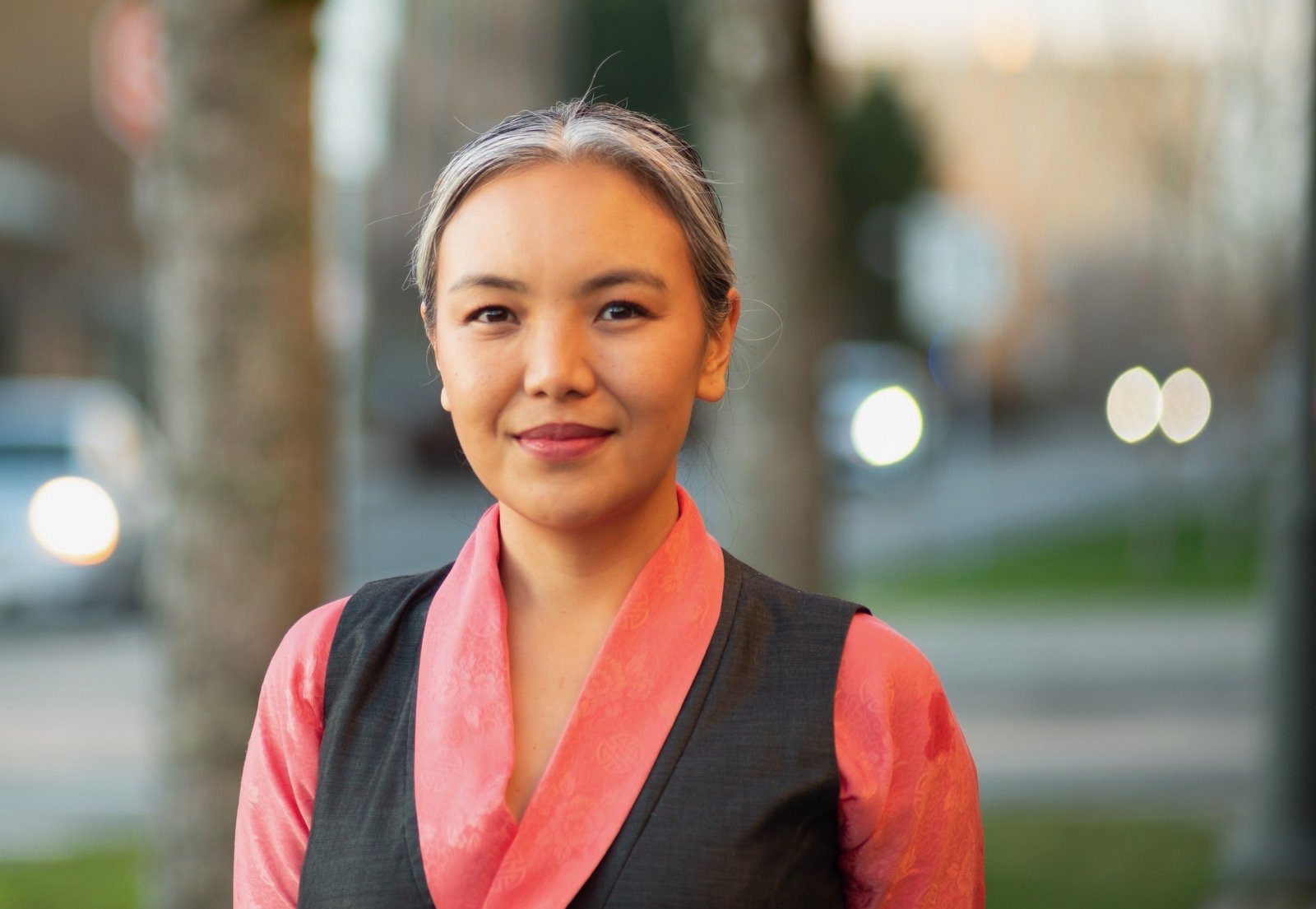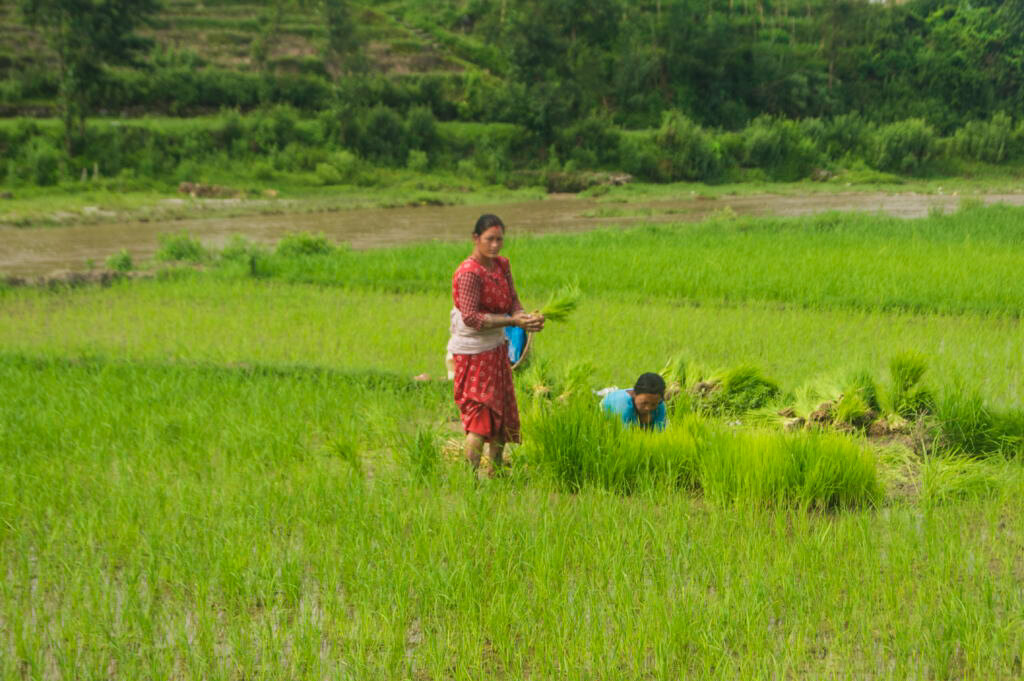Tashi Delek!
Welcome
Hi. I’m Pasang.
…mother, anthropologist, researcher, educator from Pharak, southern part of Mount Everest region in Nepal.
I am an Assistant Professor of Lifeways in Indigenous Asia at the University of British Columbia.
I use multidisciplinary approach in my research projects, and consider plural epistemologies as a necessity, not a choice, in addressing contemporary human problems.
I believe that our sustainability as a Sherpa people in the wake of climate change depends on keeping our songs and stories about people, places and things alive for the next generation.
My research projects apply community-based approach to exploring the possibilities of collective survival on warming planet. My research, writing, and pedagogy are guided by the question: How do we live in the midst of dying?
My current collaborative projects include: Knowledge Justice Collective, Biodegradable Blessings and Ecologies of Care.
A complete list of my publications can be found here.
Latest Publication
Relevance of the Sixth IPCC Assessment Report to Indigenous lived realities
This article contributes to Indigenous literature on Intergovernmental Panel on Climate Change (IPCC) Assessment Reports (ARs) for an exploration of the science–policy–politics interface at the global scale. It presents findings from the systematic review of the latest AR6, conducted by the Knowledge Justice Collective, that examined Indigenous content in the report and the scientific knowledge base AR6 is based upon. It shows that paying attention solely on numerical increases of Indigenous content rather than the uneven Indigenous representation in the IPCC knowledge base produced in the English language by researchers largely in environmental science-related disciplines at elite institutions limits our understanding of the nuances of Indigenous lived realities in the ARs. Therefore, without an intervention at the knowledge base level, Indigenous Peoples and Indigenous Peoples’ Knowledges will continue to be legible only through extractive relationships in the IPCC AR processes while continuing to promote epistemic Eurocentrism.
Sherpa (Sherpa), P. Y. (2025). Relevance of the Sixth IPCC Assessment Report to Indigenous lived realities. AlterNative: An International Journal of Indigenous Peoples, 0(0). https://doi.org/10.1177/11771801251362621
Access the article here.
Ethical, Respectful, and Reciprocal Engagements with Indigenous Sciences
Mountain cairn overlooking sacred Gokyo Tso (Lake) and Renjo La (Pass).
Indigenous sciences do not position humans as exceptional or as having authority, superiority, or ownership over other beings. Instead, many Indigenous sciences position humans as part of (entangled with) the world. Thus, they also emphasize that knowledge itself is produced and shared relationally, not only amongst humans but amongst other-than-human beings as well. In this sense, within Indigenous sciences, other-than-human beings and the land itself are not treated as objects but rather as living entities, knowledge holders, and teachers that carry essential wisdom for living well together on a shared, finite planet (Ahenakew 2016; Marker 2004; McGregor et al. 2020). Because of the reciprocal relationships between humans, other-than-human beings, and the land, the health and futurity of Indigenous Peoples, lands, and knowledges are understood to be intertwined and require ensuring that Indigenous Peoples can access and fulfil their responsibilities to their territories.
Stein, S., Ahenakew, C., Valley, W., Sherpa, P. Y., Crowson, E., Robin, T., ... & Evans, S. (2024). Toward more ethical engagements between Western and Indigenous sciences. FACETS, 9, 1-14.
Access the article here.
Climate Change in Nepal through an Indigenous Environmental Justice Lens
An IEJ‑deficient perspective on climate change adaptation in the Himalaya ignores the relationships between the residents and the places that have taken care of each other for countless generations. In contrast, an IEJ‑informed climate change policy would be built on the principles of relationality, respect, and reciprocity without separating environmental concerns from spiritual ties to the land, mountain, air, and water, and with a special attention to the social, political, and economic survival of Indigenous communities.
Sherpa, P. Y. (2024). Climate Change in Nepal through an Indigenous Environmental Justice Lens. In Environmental Justice in Nepal (pp. 217-224). Routledge.
Access the chapter here.
Speaking of Indigeneity
Indigeneity is about Indigenous ways of being and knowing, how Indigenous peoples live their Indigenous traditions in their everyday lives (Hunt, 2014; Perley 2014). So, Sherpa Indigeneity is distinct. Similarly, Indigeneity of another Indigenous people is distinct. Each Indigenous people have their own histories, stories, songs, dances, food, protocols, and traditions that shape the complexities of their lives. To speak of Indigeneity is thus to speak of our plural and parallel existences. It is to recognize more than one way of being and knowing. It is not about a hierarchy of being or knowing. It is about relationality.
Sherpa, P. Y., Chakraborty, R., & Carrara, A. (2024). Indigeneity. Introducing Human Geographies, Routledge. 129.
Access this chapter here.
Knowledge Justice Collective
The collective seeks to respectfully advance meaningful engagements across knowledge systems. This begins with the recognition of epistemological value of Indigenous Knowledges in solving world problems. Since 2021, the collective has focused on systematically reviewing the IPCC AR6 to identify how Indigenous Peoples and Indigenous Knowledges have been included in this authoritative scientific report on the state of the planet. This led us to collaborate with geographer Eric Nost in further understanding the global landscape of climate knowledge production and the ways in which Indigenous Knowledges have been engaged with. This project has benefited immensely from the research assistantship of students at UBC: Amrit Tamang, Charlotte Taylor, Declan Taylor, Ramudi Samarasakera, Sayano Izu, and Thanh Le.
Featured KJC Articles:
“A Plural Climate Framework”
Current Opinion in Env. Sustainability
“From Adaptation to Justice”
Climatic Change
“Mountains of Inequality”
Ecology & Society
Biodegradable Blessing
A PROJECT OF LOVE FOR OUR PLANET AND ALL SENTIENT BEINGS…
ANG DOLMA SHERPA, KALZANG DORJEE BHUTIA, AMY HOLMES-TAGCHUNGDARPA, PASANG YANGJEE SHERPA
Bird looks at the material remains of lungta and khata in Khumbu, Nepal, May 2023.
Ang Dolma is at the center of this project. Her environmentally-friendly lugta and khata were already gaining traction in Kathmandu, when she connected with Kalzang, Amy and Pasang in 2022. Today, the team is expanding conversation around biodegradable blessing through public-facing essays, prayer-flag making workshops, and educational talks to raise awareness about plastic prayers, ancestral wisdom, and planetary health.
**Read more on how the team has been “Replacing Plastic Prayers with Biodegradable Blessings in the Himalayas” in Sapiens.
Public
‘OUR SURVIVABility IS AT STAKE’
Sangita: What is at stake if we continue to disregard inequalities and different ways of understanding socio-ecological relations, loss, and climate change?
Pasang: Our collective survivability is at stake. For example, Chief Ninawa Huni Kui from the Amazon has warned us of the mass extinction in slow motion. (4) When we disregard inequalities and different ways of understanding socioecological relations, loss, and climate change, we are privileging the same systems and structures that brought us to this present moment of climate and nature emergency. Within the existing structures, the vulnerable groups keep growing, while the groups who are considered safe are contracting. During the COVID-19 pandemic, for example, some individuals and groups did fine, and some even profited financially, as their needs were met. Yet, who was serving those needs and at what expense? People experience different kinds of vulnerabilities, and we need to understand that.
Sangita: What makes you hopeful?
Pasang: What makes me hopeful is knowing that there were many who came before us, many who are with us and many who will come after us in working towards making a just, livable planet for all. This knowledge is based on an acknowledgement of our responsibility to care for each other, whether in the human form or not. It is about knowing our relationship to each other and honouring it. I am hopeful because of the tireless effort of Indigenous leaders, scholars, and intellectuals who have shown us the pathways to creating the future I want to see for my children and grandchildren. My commitment to keeping our Sherpa songs and stories alive for the next generation gives me hope.
A conversation between Sangita Thebe Limbu and Pasang Yangjee Sherpa. Published in ALERT Autumn 2023.
Hard rain is already falling
Latest scientific assessments show that even if global warming is limited to 1.5C, warming in the Himalayas is going to be higher than the global average. Glaciers are projected to melt at an even faster rate than previously predicted. Living with the looming threat of a glacial lake bursting its banks is a reality.
…..
Climate sciences pursue the quantifiable. And so, climate change discussions at the policymaking level have fallen short of recognizing the uncertainties Himalayan people face.
For those experiencing climate change in the high mountains, uncertainty comes not only from unpredictable rain patterns, but from not knowing who − in the physical world and other worlds − can provide stable ground.
From the essay published in The World Today (October 2021). Read the essay here.
MOUNTAIN AS METAPHOR: A FUTURE OF MULTIPLE WORLDVIEWS
A mountain is a metaphor. To imagine a future of alpinism is to imagine the kind of future we, collectively as global citizens, want to create on and off the mountain. The gift of history offers us an advantage. The knowledge we have inherited orally or textually shows us what to leave behind and what to take forward. Each of us has a choice to make. I dream of a future that is just and fair. What would that be like? This question cannot be answered without coming face-to-face with our present reality.
…..
In the future, I hope alpinism is able to project multiple worldviews together at once—not as a competition to establish a hierarchy, but as a way to learn from each other and to treat everyone with dignity. I hope alpinism is not just about stepping on the mountain, but about strengthening our relationship with it and with each other. I hope that the mountains are not reduced to commodities for sale; that we are able to see and hear the people whose labor makes the mountaineering tourism industry possible; and that we recognize that they are indispensable, not disposable.
From the essay published in Alpinist Magazine 75 (Autumn 2021). Read the whole essay here.











